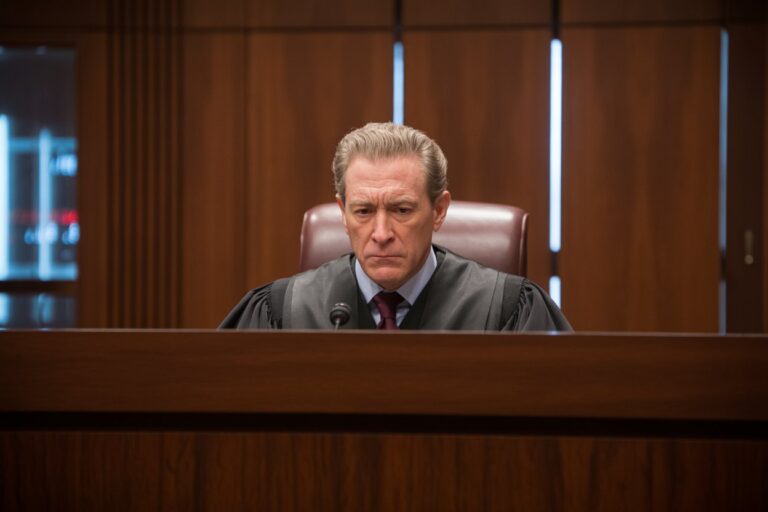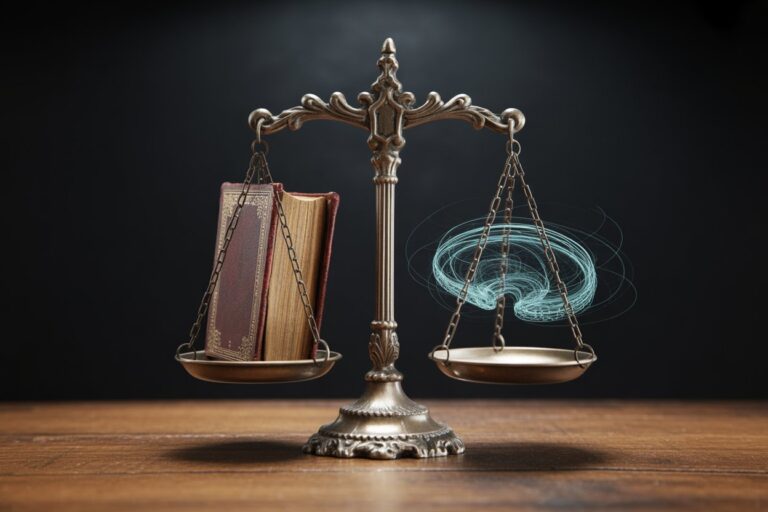When AI Hallucinations Hit the Courtroom: How Mata v. Avianca Changed Legal Practice
Two New York lawyers relied on ChatGPT to research a case, never suspecting the AI would fabricate entire judicial opinions. The resulting sanctions made “AI hallucination” a household term in the legal profession and sparked nationwide debates about verification, accountability, and the future of artificial intelligence in law.
In June 2023, the Southern District of New York sanctioned lawyers who submitted a brief with fabricated case citations generated by ChatGPT. Judge P. Kevin Castel found violations of Federal Rule of Civil Procedure 11 for failing to verify the authenticity of cited authorities. The $5,000 penalty was modest, but the reputational impact was enormous. Within weeks, the case became the defining example of AI hallucination in legal practice, appearing in ethics CLEs, bar advisories, and major law publications worldwide.
The term “AI hallucination” had been used in computer science circles since 2017, but Mata v. Avianca brought it into mainstream legal discourse as a vivid example of the phenomenon’s real-world consequences. When AI systems generate plausible-sounding but entirely fabricated information, they are said to “hallucinate.” In this case, ChatGPT hallucinated six complete judicial opinions, complete with case names, citations, judge names, and convincing legal reasoning, none of which existed.
The brief that broke the internet
The facts were straightforward. Plaintiff Roberto Mata sued Avianca for personal injury under the Montreal Convention. When the airline moved to dismiss the case as time-barred, counsel used ChatGPT to locate precedents supporting tolling. The AI tool produced citations that looked entirely legitimate, including judge names, docket numbers, internal citations, and lengthy quotations from “opinions.” The hallucinated cases even cited other hallucinated cases, creating a fictional web of precedent.
When opposing counsel could not locate the decisions, the court demanded copies. Rather than acknowledging the error, the lawyers submitted what appeared to be complete judicial opinions that were, in fact, AI-generated hallucinations. ChatGPT had not simply made citation errors; it had invented entire cases from whole cloth, fabricating judges, parties, facts, and legal holdings that never existed.
When questioned, the attorneys admitted they had relied on ChatGPT and believed its output was accurate. They even claimed to have asked ChatGPT whether the cases were real, and the AI confidently assured them the citations were authentic. Judge Castel called the episode unprecedented and emphasized counsel’s duty to verify citations before filing. The sanctions order required the lawyers to notify every judge falsely cited in their papers, a rare remedy that turned the matter into worldwide news. Ultimately, the court granted Avianca’s motion to dismiss, ending Mata’s underlying personal injury claim.
Understanding AI hallucinations in legal context
AI hallucinations occur when large language models generate false information with the same confidence they display when providing accurate information. The hallucinated content often appears plausible because the AI has learned patterns of how legal citations should look, what judicial language sounds like, and how precedents are typically structured. But the AI has no concept of truth or falsehood, it simply predicts what words are likely to appear together based on its training data.
In the legal context, this creates unique dangers. A fabricated restaurant review might be embarrassing; a fabricated judicial opinion submitted to a federal court undermines the integrity of judicial proceedings. The hallucinated cases in Mata included detailed facts, judicial reasoning, and legal holdings that appeared completely authentic to anyone not conducting independent verification.
What made the sanctions worse: the cover-up
Judge Castel’s opinion makes clear that the severity of sanctions stemmed not from the AI hallucinations themselves, but from how the attorneys responded after being caught. When Avianca’s counsel pointed out that the cited cases could not be found, the lawyers did not immediately withdraw their brief or acknowledge the AI error. Instead, they submitted additional filings attempting to prove the hallucinated cases existed, including AI-generated “copies” of the fake opinions.
One attorney claimed he was “out of the office on vacation” when he was not. Another consciously avoided confirming facts that would have revealed the citations were AI hallucinations. The court noted that had the lawyers acknowledged their error shortly after being questioned, “the record now would look quite different.” The doubling down on the hallucinated information, not the initial AI error, drove the bad faith finding that justified sanctions.
Media reaction and the mainstreaming of “AI hallucination”
The story ricocheted across legal and mainstream media, bringing the term “AI hallucination” into everyday vocabulary. Coverage appeared in the Leiden Law Blog and numerous other outlets documenting the packed courtroom hearing and subsequent fallout. The case became the go-to example for explaining AI hallucinations to non-technical audiences. Within months, firms drafted internal AI-use policies explicitly addressing hallucination risks, and bar groups cited the case in early guidance on generative AI. The courtroom was so crowded that overflow rooms with video feeds were needed to accommodate observers.
By late 2023, Cambridge Dictionary had updated its definition of “hallucination” to include the AI context, reflecting how rapidly Mata had pushed the term into mainstream usage. The case transformed “AI hallucination” from tech jargon into a concept every lawyer needed to understand.
Rule 11, ethics, and the competence question
At its core, Mata is about attorney oversight, not AI capabilities. Long-standing duties did the work here. Rule 11 requires a reasonable inquiry before presenting legal contentions. Model Rule 1.1 demands competence. Model Rule 3.3 requires candor to the tribunal. Model Rule 5.3 treats nonlawyer assistance as subject to lawyer supervision. Many ethics commentators argue that AI hallucinations fit squarely within this existing framework. Lawyers may use AI tools, but they remain accountable for every citation and quote, hallucinated or real.
Since Mata, courts and committees have started to set expectations specifically addressing hallucination risks. Dozens of federal judges now require certifications about AI assistance in filings. Bar publications emphasize understanding AI’s propensity to hallucinate, verifying all AI-generated authorities, documenting prompts and outputs, and correcting hallucination errors quickly. The case accelerated a shift from curiosity about AI to concrete governance addressing hallucination risks. Legal scholarship analyzing the case notes that Judge Castel explicitly stated there was “nothing inherently improper about using a reliable artificial intelligence tool for assistance,” but stressed that reliability requires verification.
The law firm’s response
The Levidow firm took immediate remedial action. According to the court’s opinion, the firm arranged for outside counsel to conduct mandatory continuing legal education on technological competence and artificial intelligence, with specific emphasis on understanding and preventing AI hallucinations. The firm also implemented mandatory training for all lawyers and staff on verification practices and hallucination detection. The court credited these efforts and the sincerity of the attorneys’ embarrassment and remorse, factors that influenced the relatively modest monetary sanctions.
Turning point or cautionary tale?
Whether Mata v. Avianca marks a turning point depends on the definition of precedent. As a district court decision, it carries no binding force outside the Southern District of New York. Its doctrinal reach is therefore limited. Yet its normative impact is significant. It reset expectations for verification in an age of AI hallucinations, spurred policy writing inside firms, and entered professional responsibility syllabi. The case functions like a near-miss in aviation that changes industry behavior without changing the statute book.
Critics also note that the core failure was not the AI hallucination itself, but failing to apply lawyerly judgment and verification. That critique is fair and useful. AI tools can hallucinate, but lawyers cannot abdicate responsibility. On that reading, Mata is a vivid reminder that professional duties do not yield to automation, even when AI failures are difficult to detect. Even so, the decision continues to influence judges, clients, and regulators who must set boundaries for machine assistance in high-stakes filings where hallucination risks are high.
The ripple effect: hallucinations beyond Mata
The Mata sanctions were only the beginning of a pattern of AI hallucination cases. By late 2023, similar incidents emerged nationwide. The Michael Cohen case saw Trump’s former attorney submit AI-generated fake citations from Google Bard, another instance of AI hallucination in legal filings. In January 2024, the Second Circuit referred attorney Jae Lee to a grievance panel for citing nonexistent ChatGPT-hallucinated cases. More recently, a July 2025 Alabama case, Johnson v. Dunn, saw a large law firm sanctioned for AI hallucinations, with the court declaring that monetary sanctions alone may be insufficient to deter such conduct. Courts now routinely reference Mata when addressing AI hallucination-related errors.
International response to AI hallucination risks
The ripple effects have been global. Canadian and UK commentators have cited Mata while shaping early guardrails for AI use that specifically address hallucination risks. In the EU, scholars analyze similar risks through the lens of high-risk AI systems under the AI Act. Elsewhere, policymakers experimenting with AI for legislative drafting point to the case as a counterweight that underscores verification requirements when hallucination risks exist. The message travels well across jurisdictions: innovation invites responsibility, especially when AI hallucinations can undermine legal proceedings.
Procedurally, dozens of courts now require or encourage disclosure of AI assistance, with many specifically mentioning hallucination risks as justification for transparency requirements. As more AI hallucination incidents surface in other states, opinions increasingly reference Mata, reinforcing its symbolic weight even without appellate imprimatur.
Practical lessons: detecting and preventing hallucinations
For practitioners, the duties are clear and nondelegable. Treat AI like a junior researcher prone to confident fabrication, not an authority. Build defensible workflows that assume hallucination risk and require verification. Check every citation, quotation, and legal assertion generated by AI before filing. Disclose tool use when rules or policies require it, particularly noting hallucination risks. Most critically, correct rapidly and transparently when AI hallucinations are discovered. The Mata attorneys’ attempt to cover up hallucinated cases transformed a correctable AI error into sanctionable misconduct.
Understanding that AI hallucinations are not occasional bugs but inherent features of current technology is essential. The technology may improve research velocity and consistency, but current AI systems will continue to hallucinate with confidence. Only lawyers with domain expertise and verification practices can distinguish between accurate AI output and plausible-sounding fabrications.
The bottom line
Mata v. Avianca, Inc. did not create a new doctrine of AI law or eliminate AI hallucinations from legal practice. It did something more immediate and lasting. The case drew a bright line around verification and supervision in an era when AI hallucinations can appear indistinguishable from authentic legal authority, and demonstrated that the cover-up of AI errors is often worse than the initial hallucination. Whether labeled a turning point, precedent-setting, or cautionary tale, the case is the moment when the legal profession was forced to reconcile AI’s promise with its propensity to hallucinate and the hard requirements of professional responsibility. As courts grow less patient with AI hallucination incidents, the lessons from Mata become only more urgent.
My Take
Mata v. Avianca will go down in history as a watershed moment for AI in law. It immediately alerted the world that AI is here, that it is being used in legal practice, and that despite the embarrassment and sanctions, it is not going away.
Law school textbooks will likely include it soon, if not already, making it a first-year “cautionary tale” for generations of lawyers. Yet Mata was not the last case of its kind. Since then, many lawyers have submitted hallucinated cases. The real question is when it will stop, both for AI, and for the lawyers who fall into the same trap.
The lesson is simple. Do not blindly rely on anything an AI system produces, whether citations, fact summaries, or issue analyses. Review everything. Verify everything. At least for now.
What do you think? Leave a comment below.
Sources
Association of Corporate Counsel | Esquire Deposition Solutions | FindLaw | Leiden Law Blog | Seyfarth Shaw | Stanford Law School | Wikipedia
Disclosure: This article was prepared for educational and informational purposes only. It does not constitute legal advice and should not be relied upon as such. All cases, sanctions, and sources cited are publicly available through court filings and reputable media outlets. Readers should consult professional counsel for specific legal or compliance questions related to AI use.







